Last updated: August 3, 2023
What is the Kalamata olive, and where does it originate from? This guide explores the origins, taste, and nutritional benefits of Kalamata olives.
Native to Greece, the Kalamata olive is one of the most popular and healthiest olive varieties in the world. And while they may not be for everyone, I love eating a handful of Kalamata olives as a little snack every now and then.
Keep reading, as we’re going to explore the mighty Kalamata olive and learn more about its history, where it comes from, what it tastes like, where to find it, and much more!
What Is a Kalamata Olive?
Some people love olives, while others cannot even look at them. Over the years, I have learned to appreciate olives and have developed an acquired taste for them.
Popular in the Mediterranean diet, olives offer unique flavors and benefits. But did you know that there are several hundreds of different types of olives, each with its own characteristics, texture, and benefits?
A City in Greece
Also spelled Calamata and often referred to as “Greek olives”, the Kalamata olive originates from the Peloponnese peninsula in southern Greece, named after the city of Kalamata.
Greek mythology itself intertwines with the olive tree, considering it a sacred symbol of wisdom, peace, and prosperity.
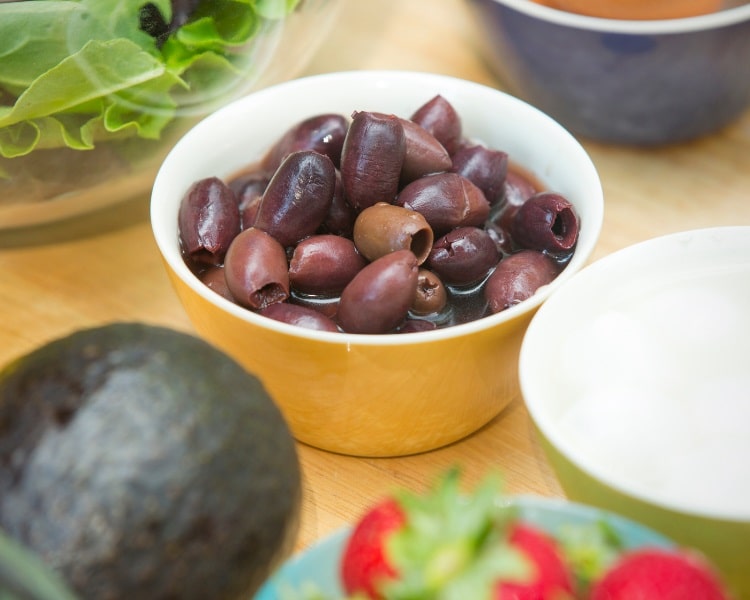
Kalamata olives have been grown and consumed for many centuries in southern Greece, and to this day, this variety of olives is still widely grown throughout the country.
Over the years, their popularity has transcended the Greek borders, and they are now grown in other regions of the world, such as California, Australia, and South Africa, where conditions are found to be similar to the olive’s native Mediterranean environment.
Kalamon Olives
You may have come across Kalamon olives that look pretty much identical to Kalamata olives. Kalamon and Kalamata are two terms often used interchangeably, which can sometimes lead to confusion. The truth is, they refer to the same type of olive.
Kalamon is the name that’s often used to designate the Kalamata variety of olive in accordance with the Protected Designation of Origin (PDO) status granted by the European Union. This status ensures that only olives grown in the Messinia region, around the city of Kalamata, can be labeled as “Kalamata” olives.
Kalamata olives that are not grown in that region cannot be marketed as such. Instead, they are sold as Kalamon olives. How interesting!
Appearance and Taste
Ripe Kalamata olives are deep purple in color, bordering on black, and they cannot be picked when they are still green and unripe. They are also bigger in size and have a more rectangular shape than many other common green and black olives.
Kalamatas have a rich, robust flavor profile that’s a blend of fruity, tangy, and salty notes. And when you bite into a Kalamata olive, you’re greeted by a smooth, meaty texture.
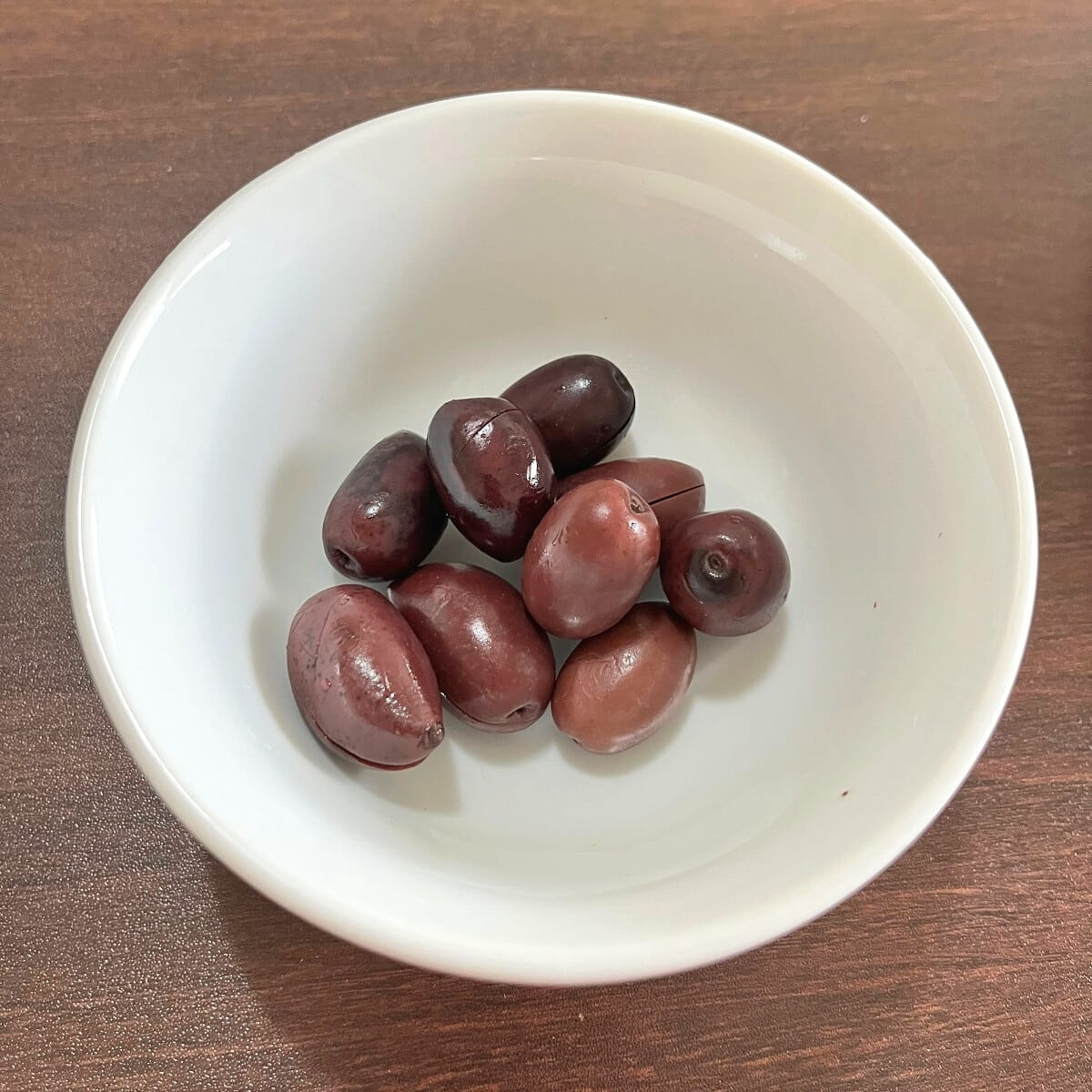
Unsurprisingly, the Kalamata olive is typically more expensive than regular olives due to the traditional way of growing and processing, and also because of their rich taste.
Also worth noting is that the Kalamata olive is officially classified as a fruit because it has a pit inside. This essentially applies to all olive varieties.
Looking for a more fruity kind of olive? Perhaps try Castelvetrano olives, one of the more popular varieties due to their mild, almost sweet, taste.
The Processing of Kalamata Olives
Once Kalamata olives are harvested at optimal ripeness, they’re usually too bitter to be eaten directly.
Therefore, they must undergo a curing process to remove the bitterness and bring out their rich, complex flavors:
- Curing:
The freshly picked olives are first submerged in a brine solution, which is a mixture of water and sea salt. This brine initiates a fermentation process, which can last several months. The bitterness slowly dissipates, and the olives develop their characteristic rich, fruity, and slightly tangy flavor. - Rinsing:
After curing, the olives are thoroughly rinsed to remove the excess salt. - Marinating:
The olives are then often marinated to enhance their natural flavor. The marinating mixture usually includes a combination of olive oil, vinegar, and herbs like rosemary or thyme. The olives are allowed to soak up these flavors over several days. - Packing:
Finally, the Kalamata olives are packed, often in olive oil or a brine solution to preserve their flavor and freshness. They’re then ready to be shipped to markets and stores worldwide.
Even after this preparation process, Kalamata olives still contain high levels of polyphenol (see further below). They will also still taste somewhat bitter but much less than before the preservation process.
How to Consume Kalamata Olives?
I love eating them straight from the, as a little afternoon work snack, or often as an appetizer before dinner.
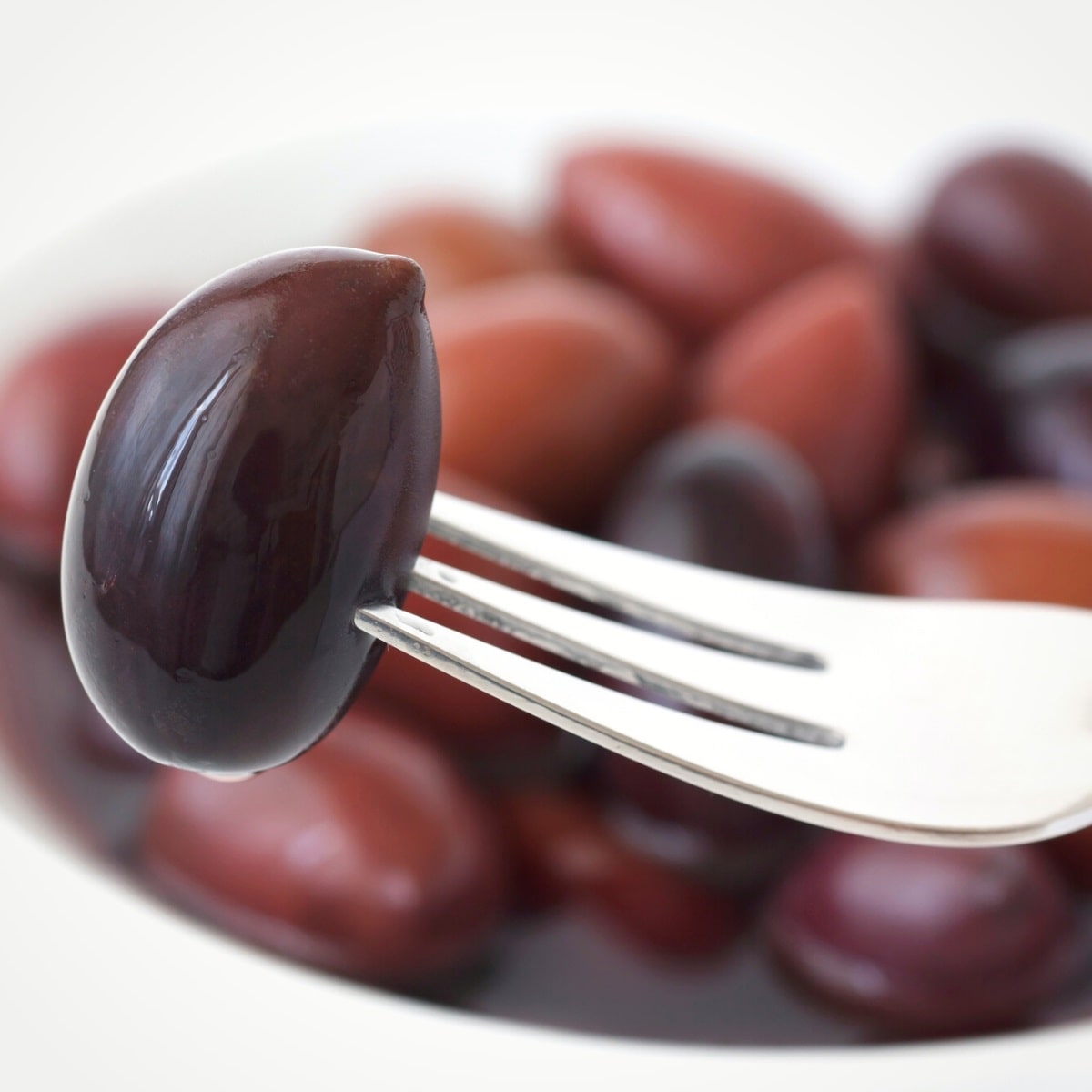
They also work really well in different types of salads, on pizzas, casseroles, pasta dishes, and also as part of a mixed platter with cheese and fruits.
Especially with salads, there is so much you can do with olives. It’s a matter of just trying to mix up the ingredients and find the best balance of flavors that works for you.
Nutritional Profile and Benefits
Kalamata olives, and olives in general, are unique fruits.
Unlike conventional (sweet) fruits, olives aren’t particularly high in vitamins and minerals, but they do contain a high percentage of fat, but it’s mainly the good kind of fat.
Nutritional Profile
Let’s have a more detailed look at the nutritional profile of Kalamata olives. As you can notice in the table below, vitamins and minerals are lacking, but that’s pretty common with olives. That said, Kalamatas do contain small amounts of calcium, iron, copper, and vitamins A and C.
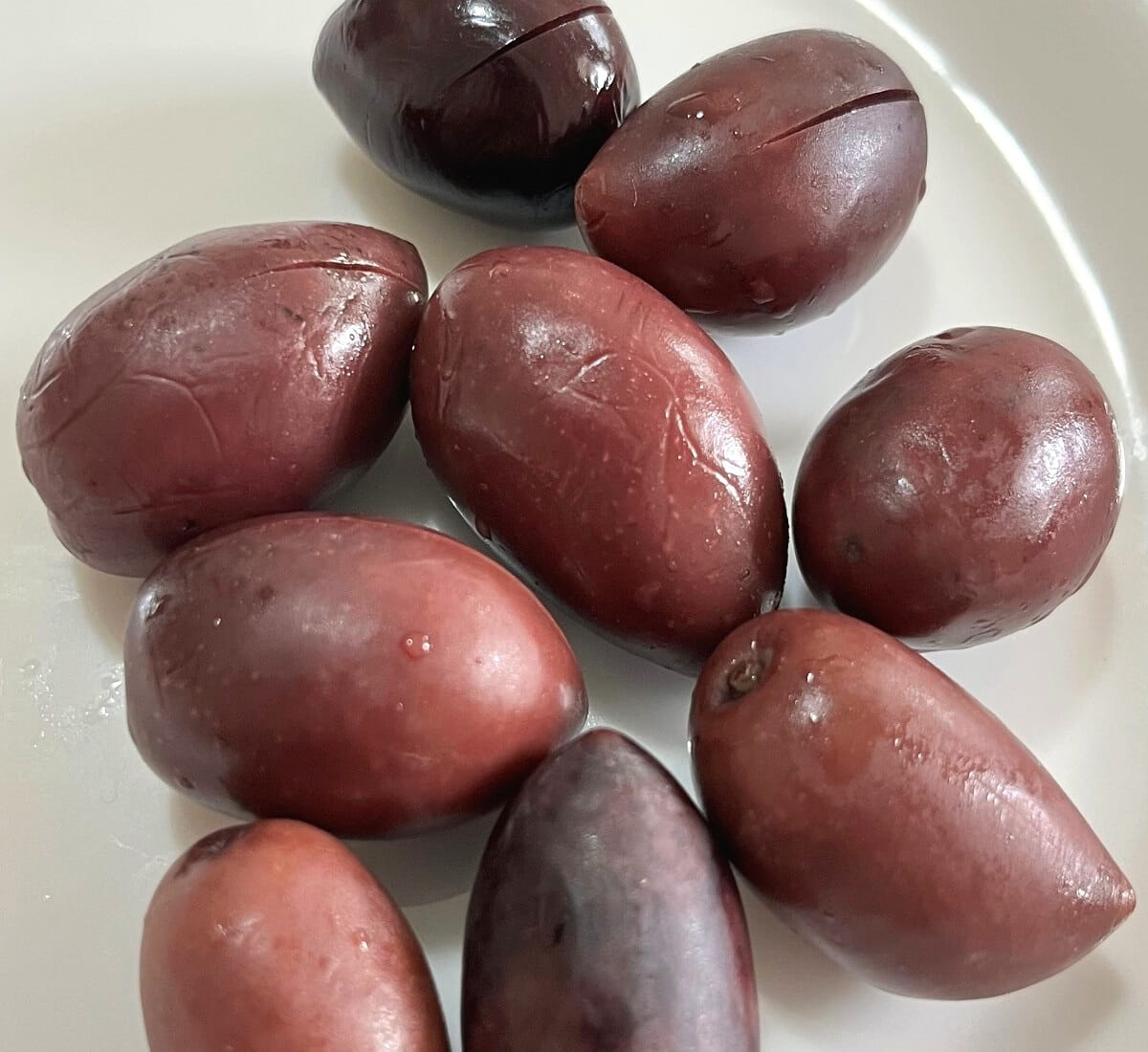
What’s also common with olives is their high fat and sodium content. The sodium is mostly a result of the preservation process. Sodium might have a bad reputation, but it is, in fact, an essential nutrient. But too much sodium, can potentially cause issues so moderation is key.
The fat in Kalamatas is mainly monounsaturated fats, namely oleic acid, which is considered a good type of fat.
The below data is taken from the FoodData Central website and are from one particular Kalamata olives product. Different products will have different data, but the below nutritional profile seems pretty standard for processed Kalamata olives in a jar.
| Kalamata Olives Nutritional Profile (100 grm) | |
|---|---|
| Energy | 167 kcal |
| Carbohydrates | 6.67 g |
| Protein | 0 g |
| Total lipid (fat) | 13.3 g |
| – Monounsaturated | 10 g |
| Carbohydrates | 13.3 g |
| Dietary fiber | 6.7 g |
| Sugars | 0 g |
| Source: FoodData Central | |
Polyphenols
The high levels of polyphenols in Kalamata olives make them such a much-desired health food in the Mediterranean diet.
Polyphenols are micronutrients or chemicals with antioxidant activity. They occur naturally in plants, vegetables, and fruits, and in products manufactured from these fruits.
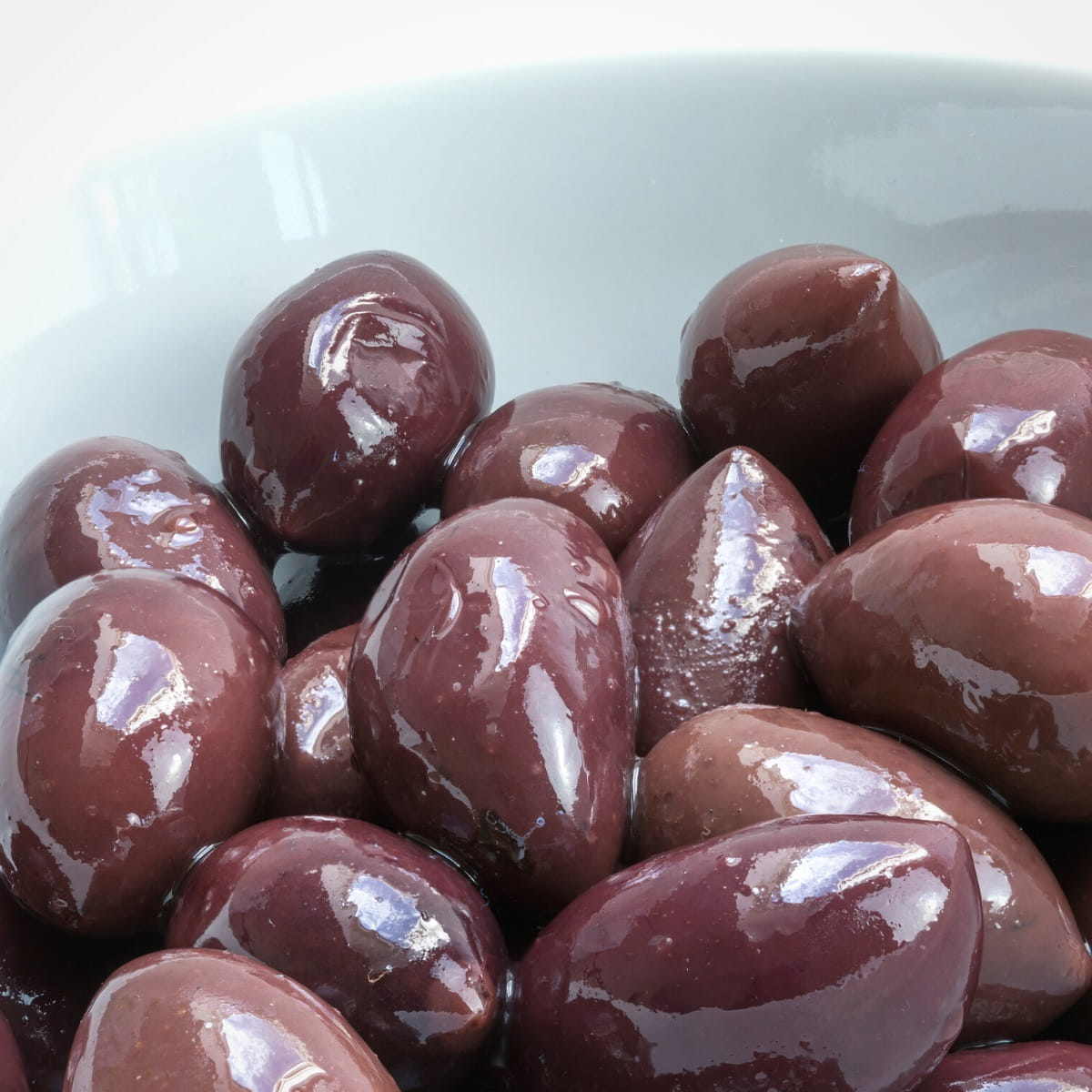
Grapes, apples, and berries, for example, typically have high levels of polyphenols. This is also why some say a glass of red wine is good for you because it is made with grapes, and grapes contain polyphenols.
Importantly, these polyphenols are not only present in the olives themselves but also in the oil in which Kalamata olives are often packed.
Final Thoughts
People in the Mediterranean have been eating Kalamata olives and have enjoyed their nutritional benefits and unique flavors for centuries.
Not everyone loves the taste of olives, but they work incredibly well in salads, as long as you find the right balance between the different ingredients.
So go ahead, get yourself a jar of Kalamata olives, and try them out! I’ve been eating them regularly for years now and love them.
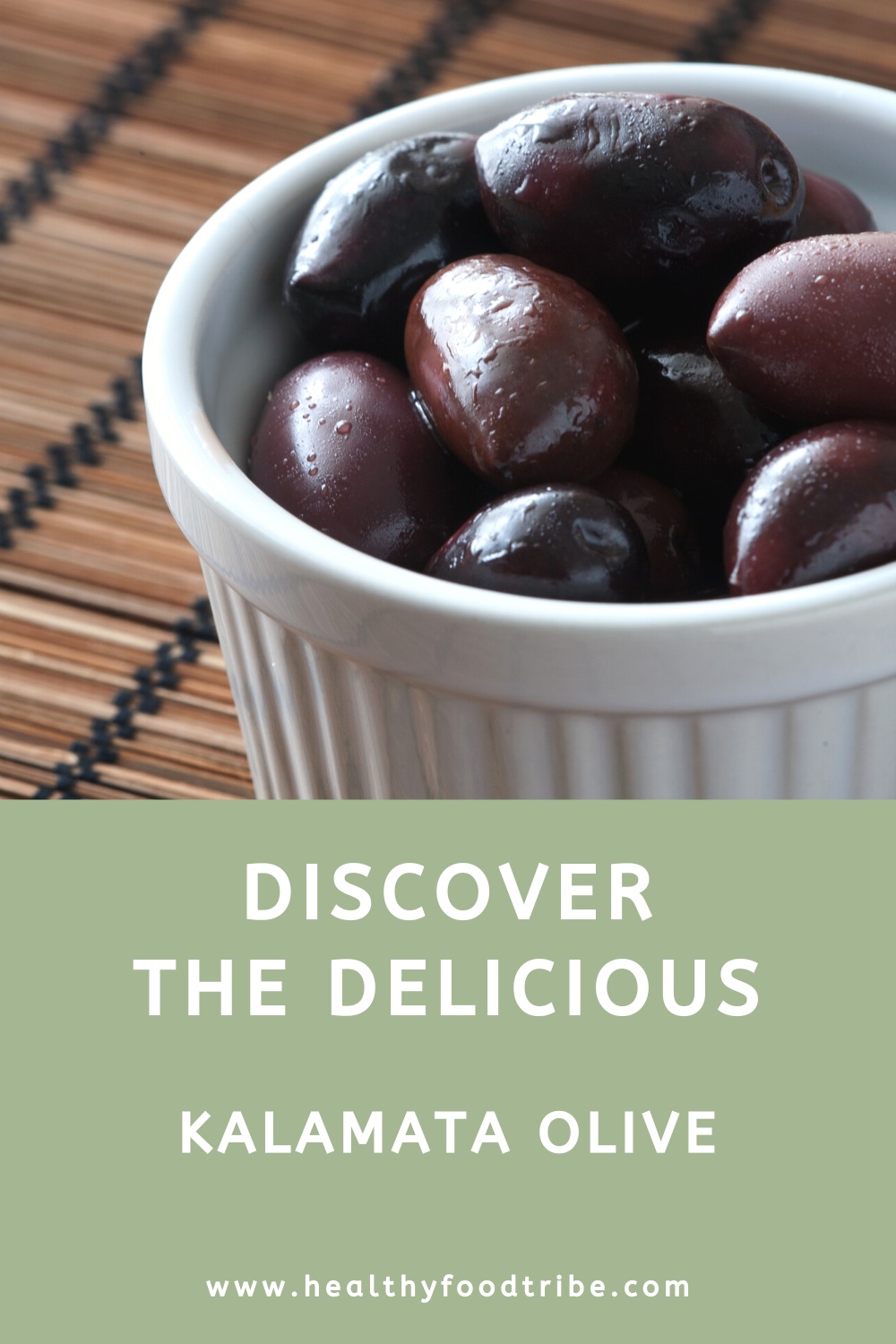
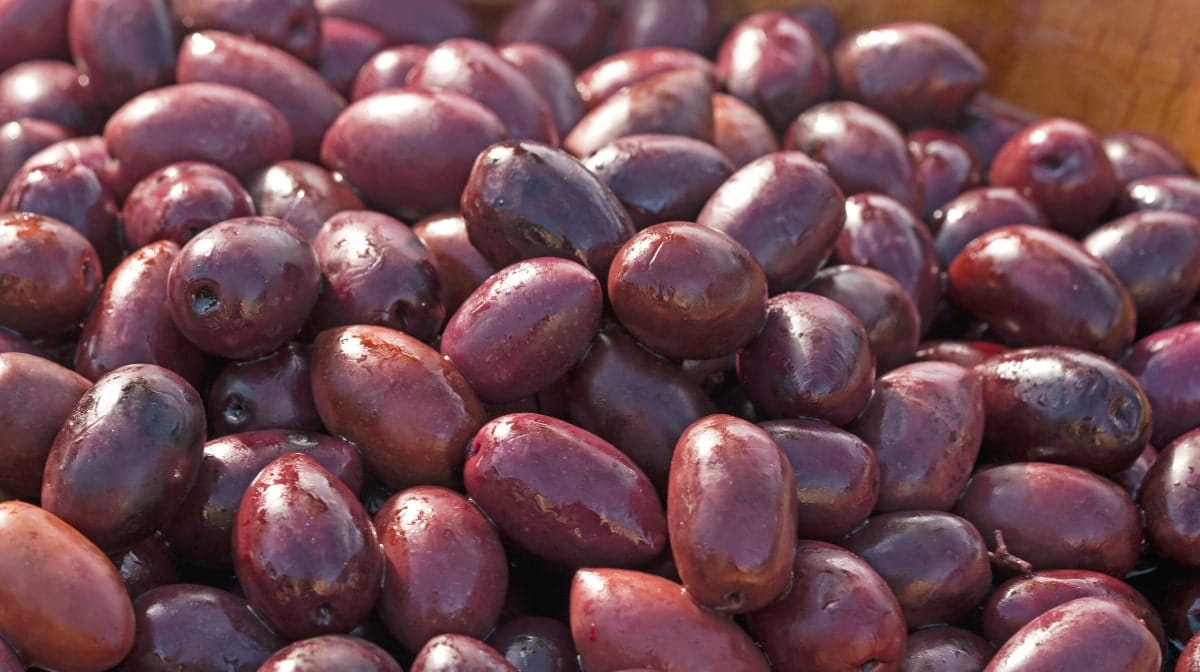
Hello Donna,
Loved your write up on Kalamata olives!
I live in California and would love to pickle some Kalamata olives! Do you know where I could source them please?
Hi Greka,
So glad to hear you liked this article.
Kalamata olives are actually quite common in grocery stores, so you should be able to find them there. Also, try the fresh deli sections, as they often have fresh olives available. Walmart should have them as well.
Good luck!